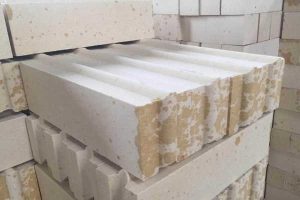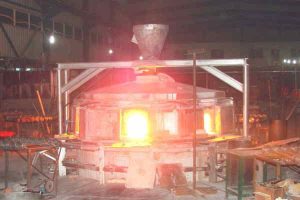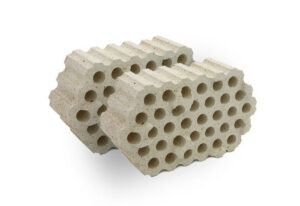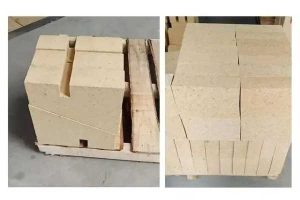Accurate Identification Of The Raw Materials Of Refractory Bricks
The different compositions of refractory bricks can be divided into five categories, nomeadamente: silicon-aluminum alloy alkaline series refractory bricks, tijolos refratários, tijolos de carbono, zirconium refractory bricks, and heat insulation bricks. Alumina refractory bricks are the first. Silicon bricks are the first acid-resistant refractory bricks.
For coke oven construction first, but for various glass, cerâmica, carbon furnace, refractory brick vaults and other bearing parts of the bearing furnace, hot air furnace temperature high parts of the use, but should not be less than 600 ℃ and temperature fluctuations of heat equipment.
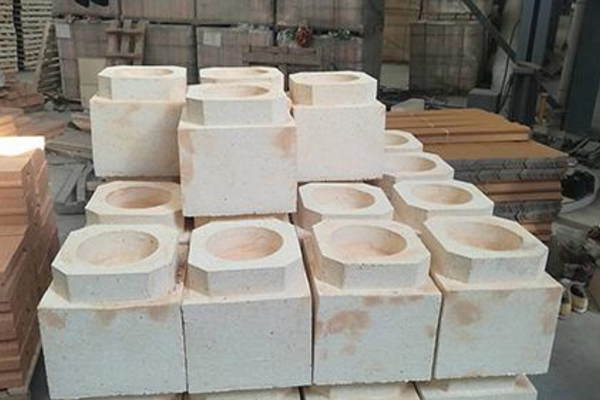
Tijolos de argila, it is a blast furnace, alto-forno quente, forno de aquecimento, caldeira, lime kiln, rotary kiln ceramic refractory bricks.
Tijolos refratários de alta alumina, high alumina refractory materials are composed of corundum, mulita, e fase de vidro. The raw materials are natural ores of bauxite and silicate, as well as fused alumina, sintered alumina, mullite composition, and clinker of alumina and clay calcination. It is produced by sintering. No entanto, the commodity is also available as fused bricks, molten bricks, tijolos, and amorphous bricks. Tijolos refratários de alta alumina são amplamente utilizados na indústria siderúrgica, indústria de metais não ferrosos, e outras indústrias.
Corundum refractory brick, which is a kind of refractory brick with corundum as the first object, can be divided into sintered corundum brick, and electrofused corundum brick.
With the continuous development of the cement industry, the requirements for refractory materials have also been put forward higher. Refractory bricks are popular because of their high-temperature resistance. Então, how do friends know the quality of refractory bricks?
The refractory brick quality inspection method is usually hammer smash brick base, listening to their sound is determined, when a dull sound “, also confirmed the refractory material internal open space or level, this brick is not suitable for processing. When the sound is balanced. Confirmation of the internal structure of the brick is better. Suitable for processing; when the sound is very clear, close to the metallic sound. It is proven that the internal sintering of refractory bricks is high and the process is difficult. It has a high density, good detail, força elevada, and high thermal conductivity per unit volume component.
Refractory bricks have the following characteristics: composição química: the main components to determine the quality and performance of refractory materials; força compressiva: the ability to accept the maximum pressure (room temperature); resistência ao choque térmico: the ability to resist temperature changes without being destroyed. Flexural strength: the ability to accept shear pressure. Load softening temperature: also known as high-temperature load deformation temperature threshold, this parameter is very important to symbolize the high-temperature resistance of the material.
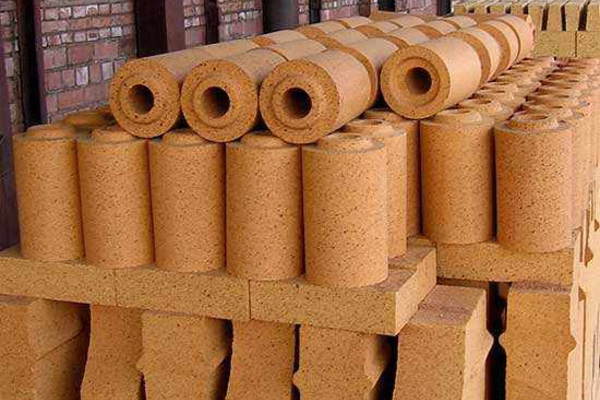
Então, is insulation brick good or refractory brick good
1. Thermal insulation performance
Refractory brick thermal conductivity is 1.0 (temperatura média 350 ± 25 ℃) c / m.k acima, while the thermal conductivity of insulation brick is generally in 0.2-0.4 (temperatura média 350 ± 25 ℃) c / m.k. This can be concluded that the insulation performance of the insulation brick than refractory brick insulation performance is much better.
2. Refratários
The refractories of refractory bricks are above 1400 graus, while the refractories of insulation bricks is mainly below 1400 graus.
3. Densidade
The density of refractory bricks is basically above 2.0g/cm³, while insulation bricks are mostly light insulation materials, and density is generally 0.8-1.0g/cm³.
Compreensivo, refractory bricks have high mechanical strength, longa vida útil, boa estabilidade química, nenhuma reação química com o material, e boa resistência a altas temperaturas, a temperatura mais alta resistente ao calor pode atingir 1800 ℃. É especialmente adequado para uso em fornos de conversão de alta e baixa temperatura, fornos de conversão, conversores de hidrogenação, tanques de dessulfuração, and methanation furnaces in fertilizer plants, and also in hot air furnaces and heating conversion equipment in the steel industry.
Refractory brick has the advantages of high density, força elevada, resistência ao desgaste, good corrosion resistance, small coefficient of thermal expansion, high grinding efficiency, low noise, longa vida útil, and non-staining materials. It is a high-quality grinding medium adapted to various grinding machines.
Insulation brick has heat preservation and insulation: effectively reducing energy consumption. Fireproof: reach the national standard A grade. Clean, environmental protection: will not cause secondary pollution of the air. Light weight: each square meter only weighs about 1.4 kg, reducing the load of the building. Simple production: completely break through the traditional process, and greatly shorten the construction cycle. Aesthetic: adjustable to various colors, suitable for open installation. Durable: longa vida útil. 7 major advantages.
Tijolo refratário e tijolo isolante são muito diferentes, their use environment, escopo, e o papel são diferentes. Locais diferentes usarão materiais diferentes, na compra de materiais, we have to decide which refractory material is suitable for their use according to their actual situation.

